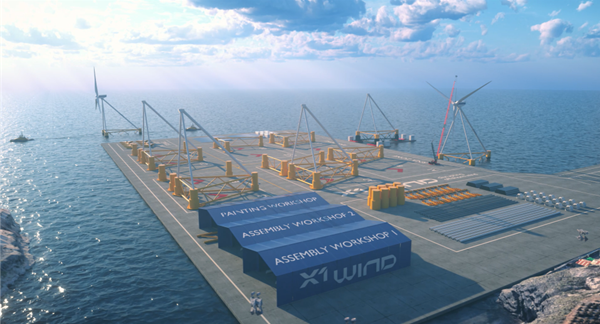The Project
The project will contribute to the deployment of a 6MW pre-commercial floating wind platform in the Mediterranean Sea and pave the way to mass deployment of the floating offshore wind industry.
The NextFloat+ main objective is to demonstrate a competitive and sustainable pre-commercial floating offshore wind solution, that will contribute to reduce the industry’s LCOE and accelerate the rate of deployment of floating wind platforms.
By deploying a full scale 6MW prototype, called ‘X90’, the project will test the integrated system design and its manufacturing, assembly and installation procedures at a scale that is relevant for the future offshore wind farms, whilst decreasing the risk and required time versus the alternative of deploying larger units. In parallel, by upscaling 14MW+ and 20MW+ design ready for mass production, the project will directly incorporate the learnings obtained from this mid-sized pilot into the final commercial designs, unlocking the potential of cost-effective floating wind farms.
The NextFloat+ consortium is a collaborative effort between key stakeholders in the floating offshore wind value chain. The project is led by X1 Wind as project coordinator, with Technip Energies and NextFloat Plus S.A.S. as project beneficiaries. NextFloat+ is backed by the European Commission under the Innovation Fund grant with public funding of 13.4M€.

The project goes beyond the state of the art through its multi-faceted approach to innovation. By combining a tripod-like structure with a Tension Leg Platform (TLP) mooring and a downwind turbine, the PivotBuoy® technology creates a structure that passively weathervanes with the wind direction and substantially reduces the steel weight when compared to “traditional” technologies. The design significantly brings down capital and operational expenditure, and creates a reliable and efficient system that is easier to install and maintain. In addition, the Single Point TLP reduces the seabed occupation, while the Bio-Boosting systems recovers the affected natural environment, ensuring coexistence with fisheries and natural habitats. These technologies will substantially reduce the Levelised Cost of Energy (LCOE), thus contributing for a faster adoption of floating offshore wind, and will avoid over 35600 tons of CO2 equivalent emissions over the first ten years of operation.
The initiative aligns with key European policy areas, notably in achieving climate neutrality through scaling up the use of renewable energy. The NEXTFLOAT+ project is aligned with the European Union’s Strategy on offshore renewable energy and with the European Green Deal aiming at climate neutrality by 2050.
The NEXTFLOAT+ project will also have significant implications for local and regional economies. The project represents the next step towards the industrialisation of offshore wind, which is key for the ramp up of local supply chains. The scalability of the project’s design also allows for both efficiency gains and cost reductions, providing a foundation for further deployment and broad economic benefits.


